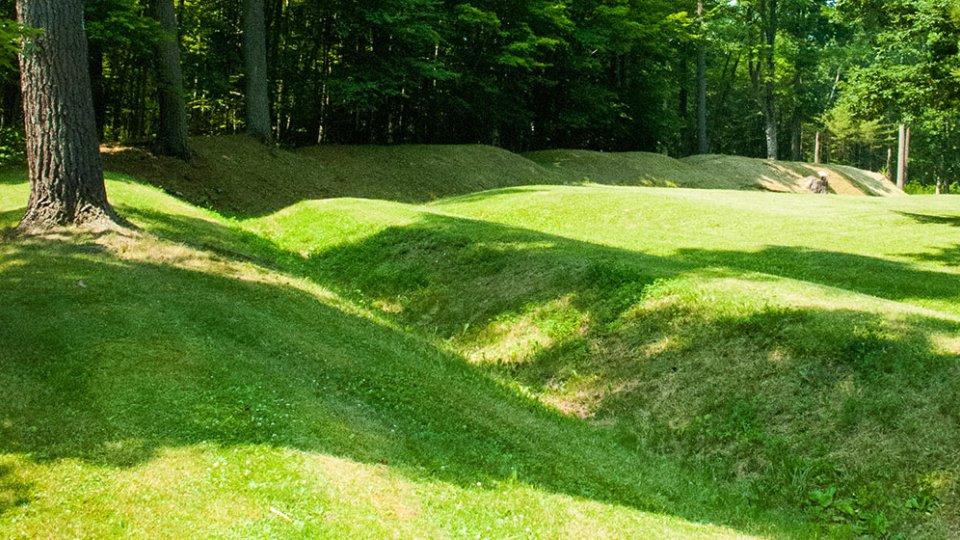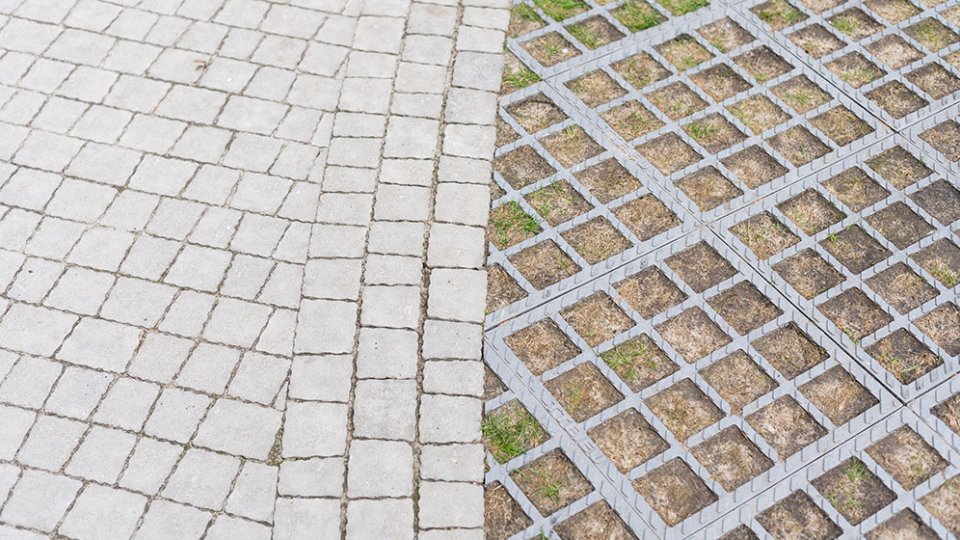Types of Green Infrastructure
Bioretention (Rain Gardens)
- A bioretention area is an engineered sunken area that collects rainwater from rooftops, sidewalks, and streets. Bioretention areas are designed to allow water to temporarily pond when it rains and then either soak into the ground or flow through an underdrain.
- Rain gardens are less engineered than bioretention areas. The term “rain garden” may be used by some municipalities to informally describe bioretention areas. Rain gardens are small, shallow, sunken areas with plants that collect stormwater runoff and filter it through a mixture of soil, sand, or gravel.
- Resources and examples:
- EPA Stormwater BMP Fact Sheet: Bioretention (Rain Gardens) (pdf)
- EPA Stormwater BMP Fact Sheet: On Lot Treatment (pdf)
- EPA Stormwater BMP Fact Sheet: Grassed Swales (pdf)
- EPA Bioretention Handbook (pdf)
- Minnesota Stormwater Manual: Types of Bioretention
- Milwaukee Metropolitan Sewage District: Bioswales
Functions: Infiltration (if no underdrain), biofiltration, retention, evapotranspiration
Planter Boxes
- Stormwater planters are a type of bioretention surrounded by vertical walls and may be open or closed underneath the practice. They allow stormwater to flow through soil and gravel and either soak into the ground or flow through an underdrain.
- Usually found in downtown areas, they collect and absorb runoff from streets, sidewalks, and parking lots. Ideal for areas with limited space, planter boxes can be a useful way to beautify city streets.
- Resources and examples:
Functions: infiltration (if no underdrain), biofiltration, detention, retention, evapotranspiration
Bioswales and Grassed Swales
- Bioswales are open channels that use vegetation or mulch to slow, filter and treat stormwater as it flows through a shallow channel or trench. A grassed swale is a variation that uses grass.
- Swales are linear practices, well suited for treating stormwater from highways or residential roads. They require a relatively large area of pervious surface.
- Resources and examples:
Functions: infiltration (if no underdrain), biofiltration, evapotranspiration
Permeable Pavements
- Permeable pavements store and/or infiltrate rainwater where it falls. The permeable surface layer can be made of pervious concrete, porous asphalt, or permeable interlocking pavers. Stormwater soaks in at the surface and is stored in underlying layers of soil and gravel. Permeable pavement systems allow stormwater to flow through the gravel and then either infiltrate into the ground or flow through an underdrain.
- Resources and examples:
Functions: infiltration (if no underdrain), retention, detention
Green Roofs
- Green roofs are covered with growing vegetation and a substrate that captures rainwater, then slowly releases it through drains, evaporation, and evapotranspiration. In addition to helping manage stormwater, they can reduce building energy use.
- Resources and examples:
Functions: infiltration, biofiltration, detention, retention, evapotranspiration
Downspout Disconnection
- Downspout disconnection reroutes rooftop drainage pipes so rainwater drains into rain barrels, cisterns, or permeable areas, rather than the storm sewer. Rerouted stormwater can be stored and/or allowed to infiltrate into the soil. Downspout disconnection can be especially beneficial to cities with combined sewer systems because it keeps excess stormwater out of the sewer system.
- Resources and examples:
Functions: reuse or infiltration
Constructed Wetlands
- Constructed wetlands combine shallow water level zones and natural processes to remove pollutants through settling and biological uptake.
- They maintain a pool of water by either intersecting the water table or being designed with an impermeable liner.
- Design variations of these wetlands allow versatility in multiple regions and in larger urban environments with enough available space.
- Resources and examples:
Functions: detention, retention, biofiltration, evapotranspiration
Rainwater Harvesting
- Rainwater harvesting systems collect rainwater from surfaces like roofs. Captured water can then be used later for irrigation or non-potable water needs.
- Typical collection methods include backyard rain barrels and larger building cisterns.
- Resources and examples:
Functions: retention, reuse
Green Streets and Alleys
- Integrating green infrastructure into the design of streets and alleys can help store and filter stormwater. Permeable pavement, bioswales, planter boxes, and trees are among the elements that can be woven into street or alley design.
- Resources and examples:
- EPA Stormwater BMP Fact Sheet: Street Design and Patterns (pdf)
- EPA Region 3 Green Streets, Green Jobs, Green Towns (G3) Program
- EPA Stormwater BMP Fact Sheet: Alternative Turnarounds (pdf)
- Syracuse Green Street: Concord Place (pdf)
- Los Angeles Green Streets and Green Corridors
- The Chicago Green Alley Handbook (pdf)
Green Parking
- Many types of green infrastructure can be seamlessly integrated into parking lot designs. Permeable pavement, bioretention, or bioswales can be included in medians and along the parking lot perimeter. When built into a parking lot, these elements can capture stormwater, reduce the heat island effect, and improve walkability in the area.
- Resources and examples:
Tree Planting and Urban Trees
- Because trees absorb stormwater in their leaves and branches, many locations have tree planting programs as part of their stormwater management strategy. Residents, businesses and community groups can contribute by planting and maintaining trees in their neighborhoods. Trees offer a wide range of benefits, from improving air and water quality to enhancing public health with public green spaces.
- Resources and examples:
Land Conservation
- Conserving open spaces and sensitive natural areas within and adjacent to developed areas can help address the water quality and flooding impacts of urban stormwater. Conserving natural spaces can also provide recreational opportunities for city residents. Natural areas that are often protected include riparian areas, wetlands, and steep hillsides.
- Resources and examples:
- EPA Stormwater BMP Fact Sheet: Open Space Design (pdf)
- EPA Stormwater BMP Fact Sheet: Conservation Easements (pdf)
- EPA Stormwater BMP Fact Sheet: Protection of Natural Features (pdf)
- EPA Stormwater BMP Fact Sheet: Riparian/Forested Buffer (pdf)
- Greenseams: Flood Management in Milwaukee
- Alachua County, FL, Green Infrastructure Investment Program (pdf)
Living Shorelines
- A living shoreline is a restoration strategy that consists of strategically placed natural materials such as plants and stones along a coastal edge. Living shorelines promote and rely on the growth of natural vegetation over time to help reduce erosion, increase resiliency and filter runoff. This natural infrastructure helps maintain the shoreline ecosystem while being an innovative coastal management technique.
- Resources and examples:













